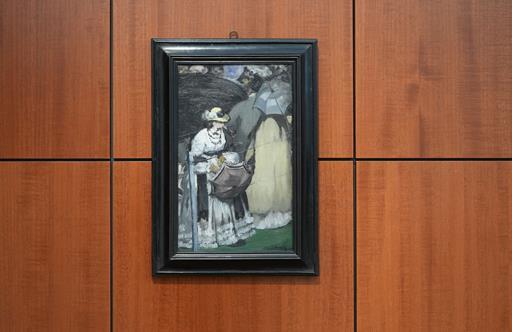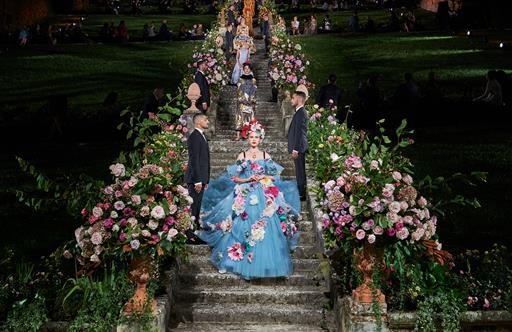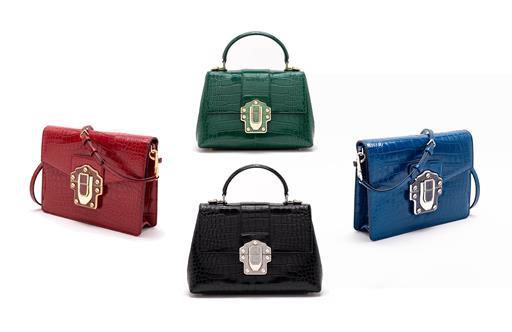Dinner for One
If there was ever a stigma to dining solo, it’s a thing of the past – feasting all by oneself may just be the superior experience at these global eateries.
Over the past couple of decades, restaurants have changed dramatically, and so – thankfully – have the fortunes of the solo diner. Thanks to the inexorable rise of the chef/restaurateur, the modern trend for open kitchens, the elevation of the humble tapas bar, and the worldwide recognition heaped on countertop Japanese cuisine, dining within arm’s length of a chef has become all the rage.
As a result, lone diners – once the pariahs of the restaurant world (How dare they take up a whole table on their own?) – are now actively courted by establishments the world over. Filling up bar stools is a numbers game in which the number “one” fits very neatly indeed.
Those who (perhaps temporarily) lack a dining companion no longer need to be seated at the small, wobbly table near the door, subject to both the opprobrium of fellow diners and a bone-chilling draught every time a smug new couple enters the restaurant. Today’s solo diners – should they choose their restaurant wisely – are fêted like royalty.
And the benefits of dining alone are many. With no need for small talk or chit-chat, you can concentrate on more important things, like eavesdropping and people-watching, or even taking in the theatre of an open kitchen and bantering with chef and sommelier. Or, should the mood take you, you could even strike up a conversation with the lone diner at an adjacent stool. You may have entered the restaurant alone, but you don’t have to leave it that way.
Here are some global recommendations for restaurants where solitary diners are more than welcome. A word of warning, though: such is the new-found popularity of the dinner-for-one that some of these places are booked out weeks in advance. You may or may not choose to be reserved at the counter, but your stool definitely should be.
Dubai © La Mar by Gastón Acurio at Atlantis The Royal
© La Mar by Gastón Acurio at Atlantis The Royal
Within the last decade or so, the world’s top chefs have flocked to the desert and turned the most populous of the Emirates into a culinary oasis. Take Jason Atherton, the British chef who has had much success both in London and Asia: his Row on 45 recently won its second Michelin star and continues to offer one of the city’s finest gastronomic experiences, spread over 17 deft and playful courses. And Peruvian chef Gastón Acurio, a longstanding flagbearer for his native cuisine, neatly distils that heritage into a menu bursting with cebiches, tiraditos, Nikkei-influenced sushi and piquant-sauced grills at his outpost at the Atlantis Dubai, La Mar by Gastón Acurio. Another export, star Andalusian chef Dani García’s restaurant, Smoked Room, offers diners (just 14 at each sitting) a “Fire Omakase” menu, in which each dish has been licked by flames or suffused with smoke. Chef Solemann Haddad, meanwhile, was brought up in Dubai, and his Moonrise has won many plaudits, not least for his “Explosion”: a panipuri shell filled with white chocolate, pineapple, foie gras, Szechuan-chilli oil and date syrup, designed to be eaten in one bite.
London © Bocca di Lupo
© Bocca di Lupo
As you might expect from Europe’s most cosmopolitan city, London’s solo-friendly restaurants offer a plethora of different cuisines at a variety of price points, from casual wine bars to the full-on Michelin experience. At chef/proprietor Jacob Kenedy’s Bocca di Lupo, the bar stools are packed at every service for his superb pan-Italian cuisine: a lively Soho crowd feasts on crisp fritti romani, marsala-braised quail and creamy red-prawn risotto. Over in Mayfair, seafood is the star at Richard Corrigan’s Bentley’s. Ask for a seat at the oyster bar, where hundreds of the frisky molluscs are shelled expertly each day, and order the Cornish dressed crab – freshly picked and joyously sweet – or the generously proportioned fish pie. More indulgent gourmets might head either to Sushi Kanesaka at 45 Park Lane for one of the finest and most authentic omakase sushi experiences in London, or to James Knappett and Sandia Chang’s two Michelin-starred Kitchen Table in Fitzrovia. Recently given a makeover, it offers a technically brilliant Modern British menu in a room as luxurious as Knappett’s all-British ingredients. Wash it down with grower champagnes from a great wine list.
Paris Guillaume Belvèze
Guillaume Belvèze
The influence of the bistronomique movement – a fusion of old-style bistros and gastronomic menus – has done much to improve the lot of Paris’s solo diners; wine lists, too, now offer more excitement and diversity. Take the gloriously belle époque Le Clown Bar in the 11ème , for instance: founding chef Sota Atsumi may have moved on, but his influence survives, and the food is as good as ever: veal brains with dashi and chives, perhaps, or steak tartare with nori and pine nuts. Meanwhile, the no-bookings, open-all-day Les Enfants du Marché, in Paris’s oldest covered market, is more rough-and-ready, but the cuisine – which includes grilled octopus with chimichurri and a daily changing ceviche – is inventive and excellent; while at the buzzy Le Mary Celeste in the 3ème, handily open from noon until 2 am seven days a week, the bargain €18 plats du jour might include Morteau sausage or escalope of veal Milanese. And at La Boissonnerie, a charmingly old-school bistro near the Pont Neuf, chef and cueilleur (hunter-gatherer) Mickael Janetzki’s menu might offer seared scallops with carrot mousseline and house-made harissa, or a confit of Auvergne pork belly with garniture grand-mère: bacon, mushroom, potato and onion.
New York City Alex Muccilli
Alex Muccilli
The Big Apple offers solo diners a vast choice of venues, from old-school diners to top-notch gastronomy, with much to enjoy in between. At Maison Premiere in Williamsburg, for instance, patrons can draw up a bar stool and choose from some 25 varieties of oysters, as well as lobster, king crab, caviar and a terrific cod brandade. The cocktails are fabulous, and the New Orleans-themed room is a joy. Likewise atmospheric is the Flatiron District’s Gramercy Tavern, Danny Meyer’s pioneering New American restaurant, which is now more than 30 years old but still a must-visit for gourmets: a bar stool in the colourful front room is a great perch for eavesdropping and people-watching, and the Tavern Burger is still one of the city’s finest. For a riotous blend of kitsch and spice, you cannot beat Thai Diner on Mott Street, where the food is as vibrant as the decor, especially if you veer away from its fusion takes on French toast and Philly cheesesteaks toward the distinctly more authentic som tum and laab. Meanwhile, some of the finest culinary theatre can be found at the handsome walnut counter in Chef’s Table at Brooklyn Fare, the Hell’s Kitchen domain of co-chefs Max Natmessnig and Marco Prins. For a three-hour show of gastronomic brilliance, it’s hard to beat.
Tokyo © The Prince Park Tower Tokyo
© The Prince Park Tower Tokyo
If there is one city in the world that has mastered the art of countertop dining better than anywhere else, it is Tokyo. Whether it’s a quick bite of sushi at lunchtime, a beer-and-whisky-fuelled night in an izakaya, or a decadent splurge at one of the city’s finest omakase restaurants, the Japanese capital has turned grazing at a bar into an art form. Tempura Tenshiba, in The Prince Park Tower, does what it says on the tin: the focus here is on all things deep-fried, especially immaculate seafood. Lunch or dinner here is an education, as well as a delight. Up in Shibuya, Jingumae Higuchi (+81 3 3402 7038) chef Kazuhito Higuchi’s speciality is kappo cuisine – a more relaxed version of kaiseki – with an offering of hyper-seasonal dishes beautifully prepared in front of his diners: each meal ends with his signature hand-made soba noodles. Just a short walk away is chef Zaiyu Hasegawa’s two Michelin-starred Den, which steers away from the rigours of kaiseki (although the menu is still ultra-seasonal) towards a more home-cooking aesthetic, with claypot-cooked rice and seafood at its heart. There is playfulness, too: try his extraordinarily lip-smacking “Dentucky Fried Chicken”. At Chiyoda City’s Tinc Gana, meanwhile, chef/proprietor Jérôme Quilbeuf fuses a Japanese omakase-style menu with the best ingredients from Spain: pan con tomate with Joselito jamón, perhaps, or saffron-rich paella shaped into onigiri and doused with shrimp bisque.
Madrid © Coke Riera
© Coke Riera
The Spanish capital’s countertop dining scene eclipses even Barcelona for its breadth, drawing, as it does, from cuisines from all over Spain – and beyond, as the stellar Mexican dishes at Ticuí amply demonstrate. Every day, the corn tortillas are made in-house on a traditional comal and used to wrap red prawns and wagyu tongue; head for the rooftop bar, 40/42, for great cocktails, snacks and views over the city. At Los 33, one of the city’s hottest addresses, there is counter seating both in the restaurant (where Uruguayan steaks are a speciality) or in the no-bookings bar at the front, with tapas and a great wine list on offer. And at Ugo Chan, chef Hugo Muñoz conjures up a stunning Japanese menu with more than a hint of Spanish to it: gyozas filled with Madrid-style tripe, for instance, or nigiri of tempura kokotxas (hake cheeks) with pil-pil sauce.
Singapore © Shoukouwa
© Shoukouwa
The island nation has been a lively place to eat out for centuries, not least because of its history as a trading hub and its vibrant street food. The hawker centres are still hugely popular, but – for solo diners – there is a world of flavours to explore, too. For example, the omakase menus at Shoukouwa, Singapore’s top-rated Japanese restaurant, showcase superb sushi: head chef Kazumine Nishida imports his produce from Japan four times a week. While at Willow, there is a Japanese aesthetic but a pan-Asian range of ingredients: chef Nicolas Tam crisps the scales on locally caught amadai (tilefish) and partners it with Japanese snow crab; botan ebi (shrimp) is matched with a Thai tom yum broth. At Kevin Wong’s Seroja, it’s his native Malaysia’s cuisine that takes centre stage, his elegant tasting menus suffused with the flavours of laksa leaf and Sarawak pepper. By contrast, Alexandre Lozachmeur’s Fleur de Sel is a thoroughly French bistro de luxe: expect masterfully cooked foie gras terrine, lobster bisque and tartare, and baba au rhum to finish.
Bangkok © 80/20
© 80/20
In a city obsessed with food, Bangkok’s solo diners have always been spoilt for choice. Eating on the hoof is truly democratic: schoolchildren, businessmen and Buddhist monks regularly crowd together at rickety alfresco counters to slurp bowls of noodles and gnaw at spicy, meaty skewers. The skewers at the “beak-to-tail” Shirokane Tori-Tama are perhaps more refined: the restaurant’s chefs are masters of Tokyo-style yakitori, and its charcoal grills sizzle and hiss with as many as 40 different cuts of chicken. Akkee, by contrast, is thoroughly Thai, with a joyous menu from all over the country. No pad thai, no traffic-light curries, just a beguiling array of flavours, aromas and textures. The arty, industrial-chic 80/20 goes a little off-piste, too: play “chilli roulette” to start (one of them is properly hot), then saunter through a menu of reimagined Thai classics, and finish with some of Bangkok’s best desserts.
Mexico City © Cana
© Cana
Casual dining at countertops, at outside tables or just at a taco stand has been a staple of the Mexico City food scene for as long as anyone can remember: combined with a new-found pride in the national cuisine fostered by a talented generation of young chefs, eating out in the city has never been so exciting. And even the old-style joints are getting noticed. El Califa de León is a humble taco stand, but – as of last year – it boasts a Michelin star. Go off-peak if you want to avoid the queues, and be aware that there is very limited seating, but – at $2 to $4 a pop – the beef or pork tacos are the cheapest Michelin-starred meal you’ll ever have. Quintonil, number seven on San Pellegrino’s World’s 50 Best, is an altogether more exalted experience. Jorge Vallejo’s reinventions of Mexican cuisine weave traditional ingredients like huitlacoche (corn fungus) and escamoles (insect caviar) into a sublime tapestry of flavours and textures. Chef Fabiola Escobosa’s Cana, meanwhile, has a more casual vibe: a kind of Mexican bistro with French and Spanish influences. And Sarde, as the name suggests, specialises in seafood. Perch at the bar and enjoy a cocktail, oysters with habanero mignonette, and Sarde’s trademark fish and chips.
Lima © Mérito
© Mérito
The Peruvian capital’s gastronomic stock has soared in recent years – to the point that eating your way around Lima has made the city a destination for itinerant food lovers the world over. You might start at El Mercado, a chic indoor courtyard where Lima’s well-heeled gourmets gather at lunchtime for terrific ceviche and a host of other great seafood, best sampled while perched at the bar with a pisco sour. Or consider Mérito, where Venezuelan chef Juan Luis Martínez has been fusing the flavours of his homeland with Peruvian cuisine since 2018: try the glazed pork belly with arepas, or scallops with wild cactus fruit and jalapeño. A casual, lunch-only joint with terrific fresh seafood, Héctor Solis’s La Picantería is another must-try, while at El Peregrino Restobar, it’s the cocktails that hog the limelight. They make a mean pisco sour, as you might expect, but also a wide range of classic cocktails from Cuba, Mexico and further afield. There’s craft beer, too, and the food – drippingly desirable cheese fondue and excellent burgers – is pretty good as well.
Cape Town © Clarke's
© Clarke's
The city’s chefs and restaurateurs have no shortage of fine ingredients to play with, and its thriving restaurant scene makes full use of the bounty on offer. Take Codfather in the chic seaside suburb of Camps Bay. It’s been dishing up fabulously fresh local seafood since 1998 and is still as popular as ever. There’s no menu, just a stunning display of fresh fish and a conveyor-belt sushi bar – the perfect spot to strike up a conversation over a bottle from the capacious cellar. There’s a sushi conveyor belt in the front room of 1890 House Sushi and Grill, too. Located in a characterful Victorian building in the boho Observatory neighbourhood, the restaurant has a skilled team of sushi chefs constantly restocking the belt. Should your taste run more to burgers and beer, head to the always-lively Clarke’s Bar & Dining Room, where the former is made from local grass-fed beef, and the latter comprises a choice of draughts from local brewer Jack Black’s. Or, for an 11-course global tour de force from renowned chef Luke Dale Roberts and executive chef Carla Schulze, bag a stool at Salon, Roberts’ latest Cape Town restaurant.




















